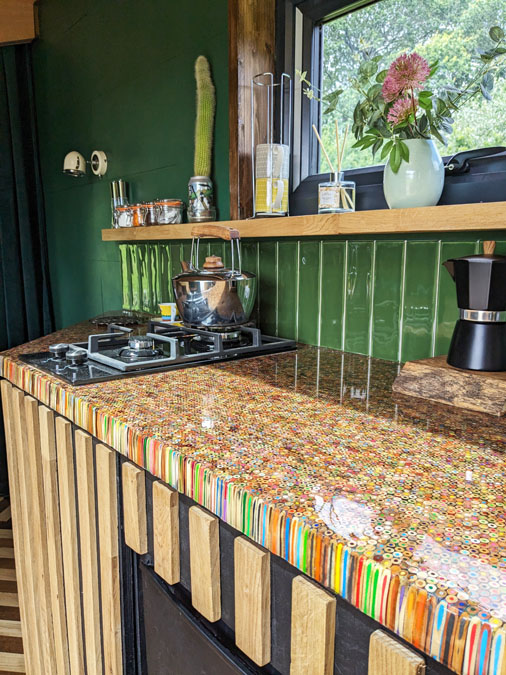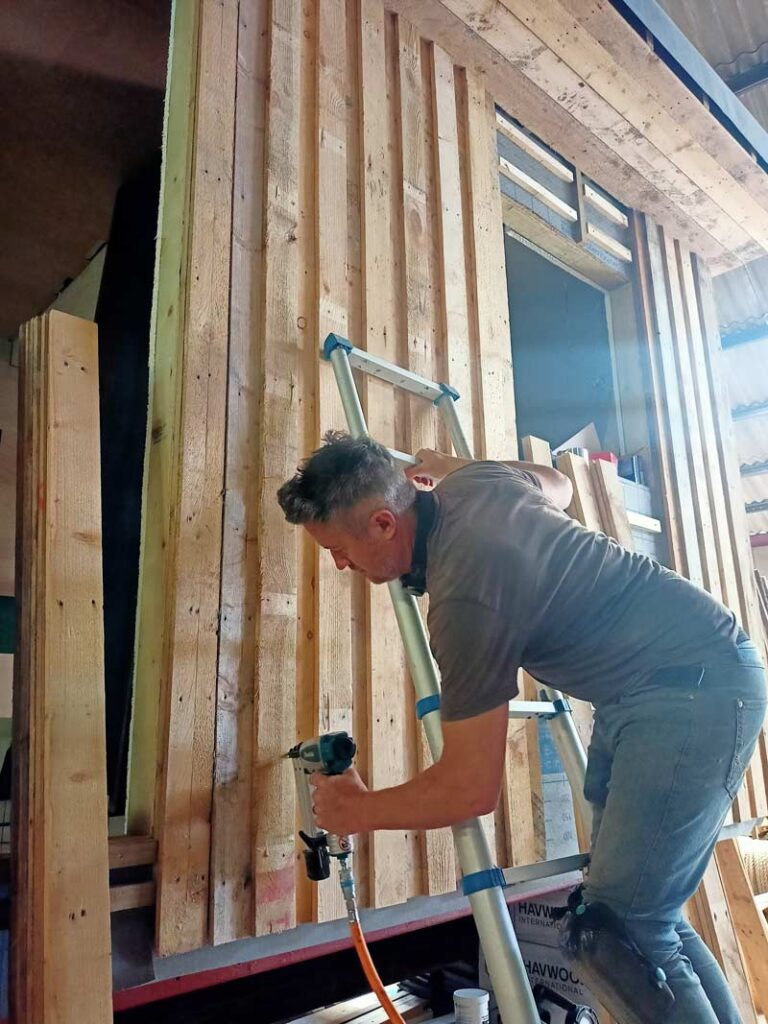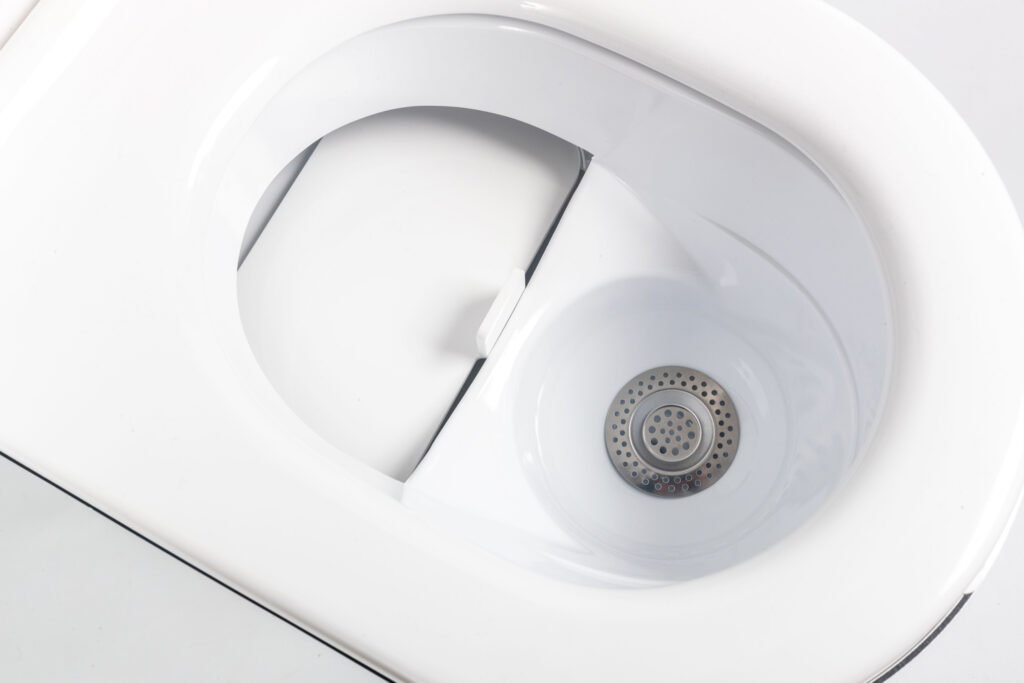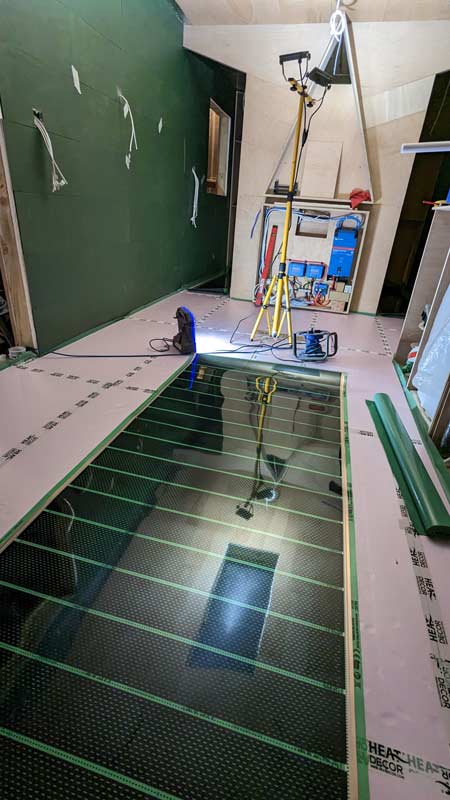A carbon-neutral space
How does The Vacationist Eco Cabin stack up?

Keeping the planet in mind
Can we say we are carbon neutral? It’s tricky to find a calculator or website that can confirm that for us, but what we do know is that to measure it, we need to think about two things:
- Embodied carbon – connected with the build
- Operational carbon – connected with the use.
Solar power
Solar panels need to be installed for just three years before the overall carbon footprint drops into the negatives. At this point, the panels will be preventing more emissions than it took to create them.
We’ve hooked up the solar to our infrared heating and water heater so that if you have excess energy it can be diverted to where you need it most. Nothing is wasted.
That means both the embodied and operational carbon are on target to be zero.


Solid foundations
Concrete is responsible for 4-8% of the world’s carbon dioxide (CO2) emissions – second only to water, it is the most widely used substance on Earth after water.
We chose to repurpose an old trailer for our base which means we don’t need foundations. We also gave new life to a piece of old machinery that serves no functional purpose anymore. We look at that as a win for both operational and embodied carbon.

Working with wood
Wood is renewable, has a lower thermal conductivity than brick and also stores more carbon than the manufacturing process uses, making it a carbon neutral material.
By sourcing wood certified by the Forest Stewardship Council (FSC), who typically plant two to three trees for every tree felled, we ensure growth in both forest cover and
CO2-hungry young trees.
We chose to use repurposed wood to clad our entire cabin. Saving carbon and saving trees.

Heating with gas
Heating was an environmental compromise for us. We cannot make it completely carbon-neutral because we have to use fuel to heat the cabin and the water supply for showers. This is a luxury cabin after all!
We chose to use propane. Whilst this is sourced from crude oil, so is not as environmentally friendly as solar, wind, geothermal or hydro sources, it does have less of an adverse effect on the natural world than gas or wood.
To balance our use of propane we have a tankless water heater that is one of the most environmentally friendly options available for off-grid set ups. It provides hot water only as it is needed.
If we look at the total footprint of our propane, its 0.19. That works out at 0.001 tonnes of CO2e per stay. We make sure that we add it up over the course of a year and reinvest into schemes to support carbon-saving initiatives.




Protecting water
As water scarcity and drought conditions persist globally, we are all being encouraged to think of reusing of greywater. We need to use our resources wisely.
Our compost toilet saves a massive 4-13 litres of water in a regular flush toilet. It does this by separating the solids and liquids, which removes the odours and means we don’t need a flush.
Composting the solids kills harmful pathogens but the nutrients remain. The result is an organic compost that feeds the soil as well as the plants. In the past this ‘night soil’ was highly coveted. These days we don’t like to think about what happens to our poo, but perhaps we should.
At the same time, we are saving carbon by removing the need for treatment. The carbon cost of potable water treatment is much higher than it need be, because we treat much more water to potable standards than we need to.
With no black water in our system (from the toilet) we can also use our greywater to irrigate the fields. We have built a filtration system that clears the debris and allows us to support the biodiversity around us.

Eco heating
Heating that uses hot air is highly inefficient. As infrared heats the material in the room, rather than the air, it uses less energy. It also has less heat loss. We have installed it throughout the cabin to keep your feet warm in winter.
Our heating aims extended to our log burner too. We love the feel of a cosy fire but burning wood has its issues. We chose a bioethanol rather to balance the feel with a cleaner fuel. Bioethanol is a renewable energy source produced by a sugar fermentation process. There’s no smoke and no carbon released. Our burner adds nothing to the environment and takes nothing from it either. What it does do is make for a very cosy living space!



